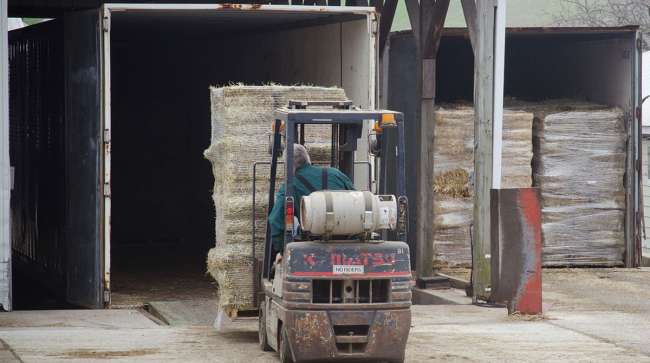Agricultural Exports to Mexico Growing in 2017, Experts Say

The U.S. Department of Agriculture reported that farm exports to China, Mexico and Canada have been strong over the past 12 months, although some transportation and logistics providers told Transport Topics that their volumes weren’t as strong as the federal data would suggest.
Agricultural exports totaled $140.5 billion in fiscal year 2017, up about $10.9 billion year-over-year and the third-highest level on record, according to the USDA. The top three export markets were: China ($22 billion), Canada ($20.4 billion) and Mexico ($18.6 billion).
U.S. dairy exports grew 17% to $5.3 billion, beef exports were up 16% to $7.1 billion and pork exports rose 14% to $6.4 billion.
The USDA forecast in 2018 is $140 billion.

Perdue
“Much of this expected success can be attributed to robust sales to our East Asian and North American trading partners. China is again shaping up to be our top market, led by continued strong soybean sales, while Canada and Mexico remain our second- and third-largest markets, respectively. We’re expecting exports to grow in the coming year to all of our top three markets,” said U.S. Secretary of Agriculture Sonny Perdue in a statement.
Through Sept. 30, the U.S. Meat Export Federation said that pork exports were up 8% and beef exports grew 9%.
“Over the past 10 years, per capita, pork consumption in Mexico has increased by about one-third. We export a lot of beef into Mexico, but it’s a challenge to find a cut of that meat at a lower price point given the Mexico peso weakness,” said Joe Schuele, spokesman for the federation. “Mexico produces a lot of pork and hams, but not nearly enough to satisfy its domestic demand.”
In the transportation industry, truckload carriers such as C.R. England have capitalized on the growing Mexican demand. Through November, the Salt Lake City-based company reported a 4.7% year-over-year increase in protein exports into Mexico.
C.R. England sends its trailers to Laredo, Texas, and contracts with Mexican carriers to complete the longhaul.
“While the peso is still devalued, when you compare the rates in 2017 with 2016, it’s recovered quite a bit. So we’re seeing improved purchasing power in Mexico and we hope to see that continue going forward,” said C.R. England Chief Sales Officer Brandon Harrison.
He also recognizes the strength of agricultural exports into Canada, telling TT that C.R. England will relaunch business into Canada in 2018 after exiting the market more than a decade ago.
C.R. England ranks No. 26 on the Transport Topics Top 100 list of the largest for-hire carriers in North America.
Transportation and logistics executives told TT that export volumes to Asia haven’t grown at the same rate year-over-year as Mexico and Canada.
For Cloverleaf Cold Storage, protein exports are flat or slightly down in 2017, according to Treasurer Adam Feiges. The logistics provider handles about 1 billion pounds of beef, poultry and pork per year in its temperature-controlled warehouses, packaging and labeling the items and filling out the proper paperwork for the USDA.
“Export volume has been steady to maybe a little soft this year. We’re not aware of any major shifts in expected thoroughput in the upcoming quarters,” Feiges said. “If you look at 2015 into 2016, there was a major jump in exports through our facilities, but 2016 to 2017 there wasn’t the same jump.”
Devine Intermodal Vice President Karen Vellutini told TT that volume of fruit, nuts and other agricultural products transported to the Port of Oakland are also flat this year.
“The first two-thirds of the year was actually slower compared with 2016. But as the crops came in and prices were set for the various commodities, volumes have picked up and we should break even,” she said. “But when you compare this year to 2012, 2013 and 2014, we’re doing much better and should match what was a very good year in 2016.”
At the ports in Seattle and Tacoma, Washington, the main exports are apples, hay and frozen french fries. While year-over-year volumes have also been flat, there is optimism that business will tick up in December and early 2018 with a lucrative apple harvest.
“We had a pretty wet spring in Washington state, which delayed some of the harvests. The initial hay cutting was several weeks late, the same is true with apples. Nevertheless, we’re still seeing strong demand for our agricultural products,” said Steve Balaski, senior manager of business development for The Northwest Seaport Alliance.




